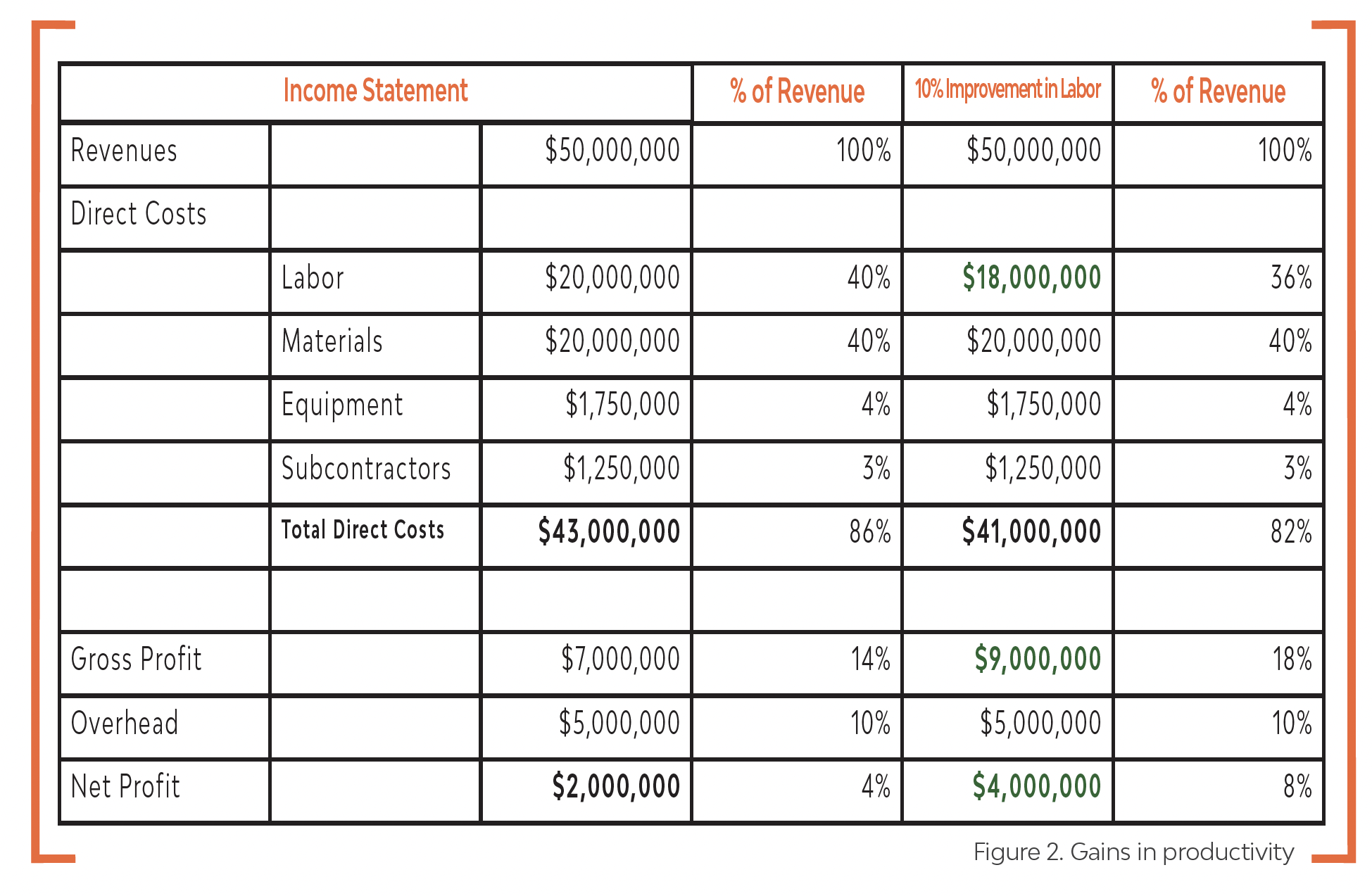
Tony Gwynn, Hall of Fame right-fielder from the San Diego Padres, was the epitome of a superior ball player. According to the Baseball Hall of Fame, Gwynn’s lifetime batting average was .338, arguably one of the best in major league history. Playing for 20 seasons with San Diego, Gwynn did not disappoint in the post-season either, where he batted .371 in his two World Series games. Here is where it gets interesting: In his career, Gwynn amassed a meager 135 home runs. He led the majors in total hits in six of his 20 seasons. The vast majority of his hitting prowess (3,006 total hits) came in the form of singles (2,378), doubles (543) and triples (85). In a time when the long ball is celebrated and revered, Gwynn proved that success can be had, one single at a time.
Now consider a construction organization. It certainly feels good to knock it out of the park with a huge project. Maybe a team has an amazing buyout, or maybe a team doubles its productivity. Or maybe the weather and permitting gods provide the grand slam, creating the full sweep on the project profitability hot stove. In reality, how often is there a confluence of these amazing statistics? Do we look for the “unicorn scenario” only to feel the “kick of the mule” on a project? Or is there something more realistic at play? For instance, are we looking for the 72-home-run season on every project, when in reality our teams are getting on base with singles and doubles, winning or playing hard in the trenches? The moral of the story is that incremental gains are more likely and should be celebrated as major victories.
Celebrating the Singles
To be clear, this is not the same thing as a participation trophy. Gwynn played 2,440 games, but he did much more than just showing up every day.
What gets recognized in your organization? Ask yourself, when was the last time you as the leader in the firm gave an “atta boy/atta girl” for the small things? Most people will say they don’t do this job for the compliments, but just consider the impact to morale. Firms appear to be stingy with the “great hit” compliment, as if the only way to win internal approval is by hitting the proverbial grand slam with two outs in the bottom of the ninth in Game 7 of the World Series. It may be important to reconsider the benefit of how you catch people doing things correctly on your team.
Incremental Success (or Failure) on a Project
It’s just a week. Wins and losses in the construction industry can happen under the most simplistic conditions. Better yet, consider general conditions. Figure 1 is a summary of a six-month project’s general conditions.

It should be noted that the costs are simply to show a level of magnitude within a firm. Additionally, items like bonding and insurance were left out, but would need to be considered when looking at a firm’s book of business. One extra week of general conditions is approximately $4,000. That’s certainly a small number in the grand scheme of things, but what if this organization had 30 projects in a year that each went over one week? Now, the firm has a cost impact of $120,000 in a single year, which also does not reflect any opportunity cost associated with improper utilization of firm resources.
While pundits will point out that not every project will have every cost (i.e., hoists, site security, etc.) on that last week, it should be noted that one of the greatest costs — supervision and labor — also has the greatest impact on gains and losses in the general conditions category. Once again, the gains relative to just general conditions could be considered a multitude of singles if a firm effectively manages jobsite overhead better.
Incremental Firmwide Gains
While every firm has general conditions, labor-intensive firms benefit from the direct labor expenditures and enhanced productivity. Call it being a switch hitter, but trade contractors have the ability to maximize their profitability just by being slightly better than their peers. Consider the example in Figure 2 below.

For this labor-intensive contractor, a minuscule 10% improvement in labor productivity, achieved through better planning and utilization, has the ability to improve the bottom line by 100%! In an industry where the net margins for most firms hover in the single digits, improving just slightly can create a massive windfall.
Consider the same analogy using our baseball star. A .250 hitter in the majors probably makes the league minimum. While $500,000 to $750,000 per year is nothing to scoff at, a .300 hitter in baseball is probably securing contractors upwards of $250 million. To be clear, this parallels our construction example quite nicely in that the difference in hitting capability is one extra hit a week for our .300 batter (i.e. 50 hits/1,000 at-bats, or 1/20, or approximately one hit a week in the majors).
It should be noted that there is also a “negative” statistic that doesn’t get mentioned. Sure, Gwynn was a powerhouse in the batter’s box. However, he also got out close to 70% of the time. Gywnn’s .338 average could easily be dwarfed by his 66% “out ratio.”
Estimators know this ratio well. While pundits will argue that “win ratio” is probably not the best estimator metric, firms often talk about securing 10% to 15% of their bids. The corollary is somewhat bleak (90% loss ratio), so it is easy to see how important wording is to this conversation. More importantly, all firms needs to wrap their arms around celebrating the singles and doubles and identify opportunities for incremental success within the firm.
In the meantime, we can all commit to spring training in Florida.
